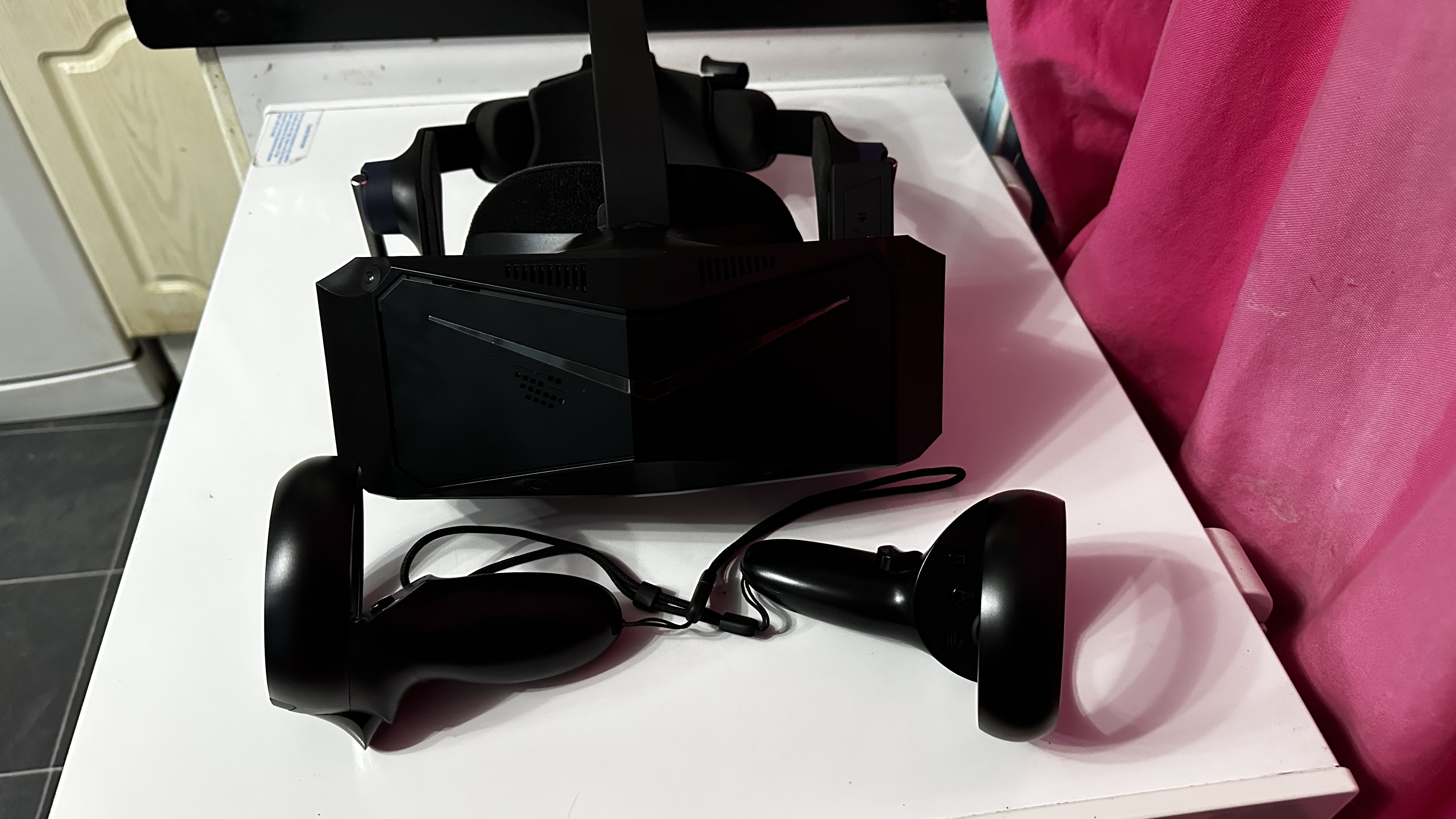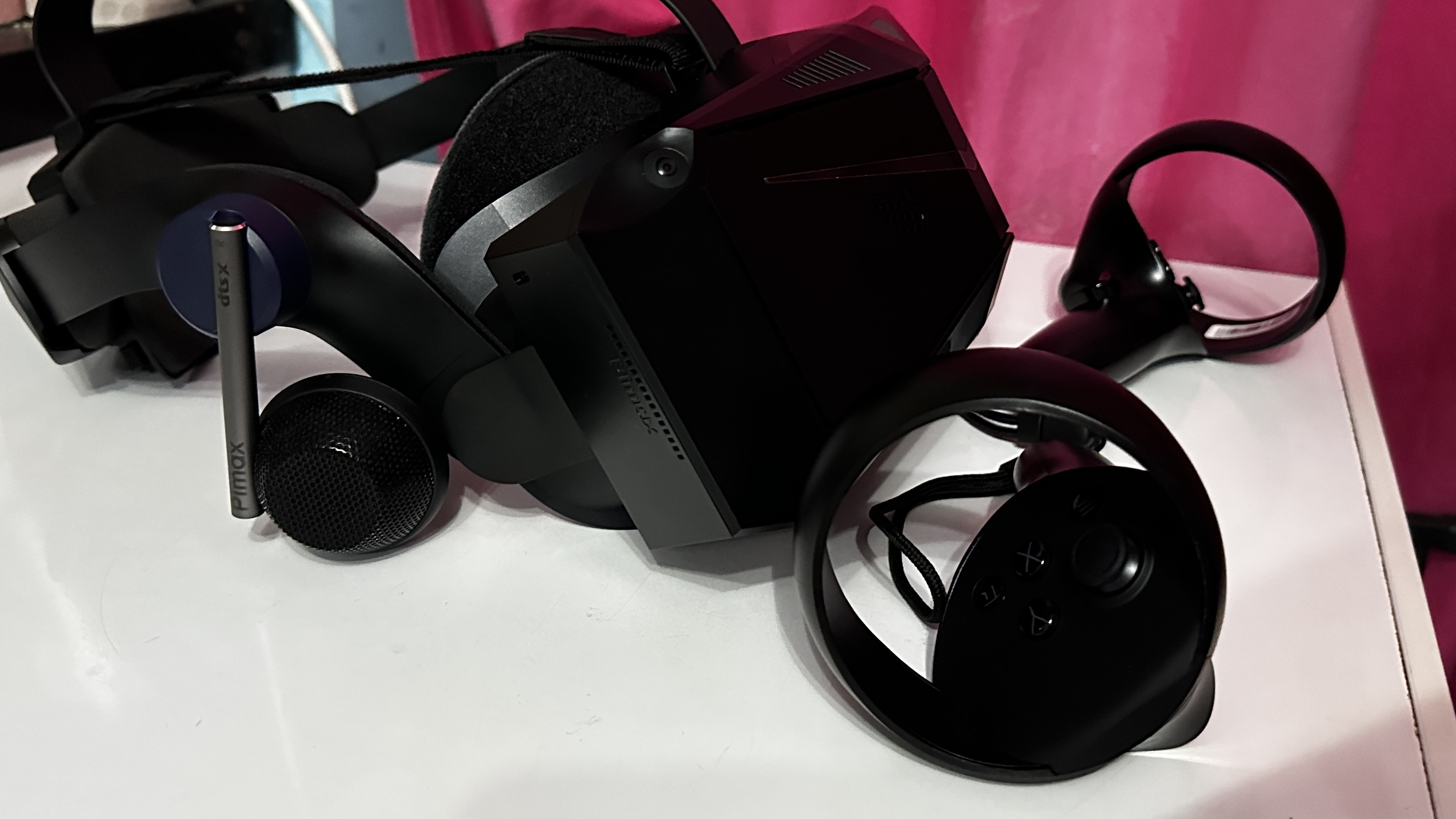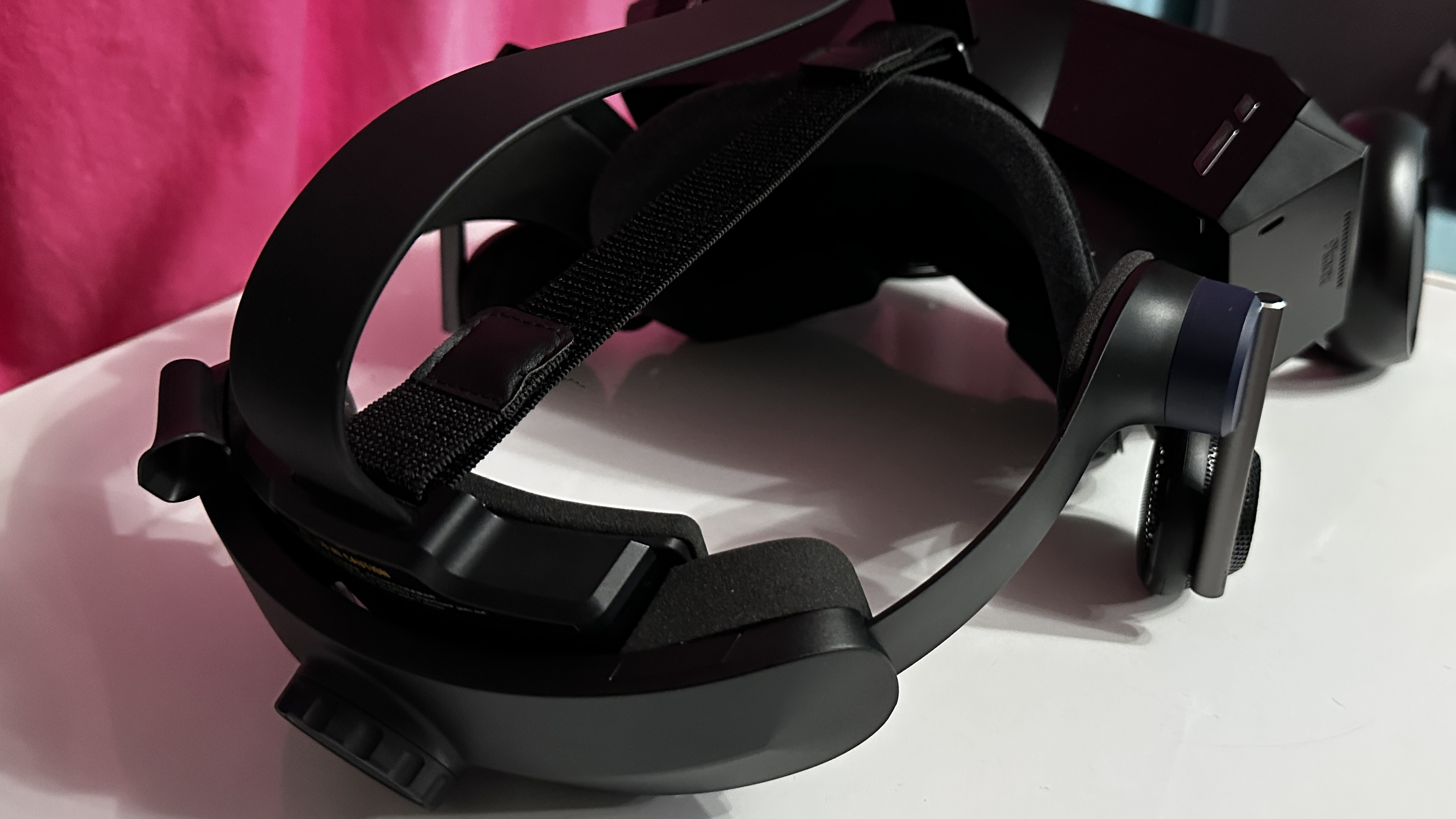Pimax Crystal review - undeniably powerful, but unfinished
The Pimax Crystal VR headset’s mission statement is to deliver the “ultra VR experience” for enthusiasts looking for the next step in immersive gaming. Armed with an exceptionally high pixel count, glass lenses, external tracking cameras, and even the option for an all-in-one mode, in theory, there’s enough under here to rival some of the best VR headsets. However, this one isn’t quite ready for prime time just yet.
However, factoring in the high price tag and the slow roll-out of promised features, the Pimax Crystal currently feels like a product that’s still in development to beta testers rather than the be-all-end-all PC VR and standalone solution that it could be.
Price and availability
The Pimax Crystal is available for $1,599 / £1,699 (around AU$2,500) which positions it as one of the most expensive consumer PR headsets available. As a frame of reference, this is around the same cost as the Meta Quest Pro when it launched and comparable to the HTC Vive Pro 2 with its controllers and base station.
Design and features

Marketed as having the “highest pixel amount of any consumer VR headset”, the Pimax Crystal’s unique selling point is all about the display: it offers a whopping total resolution of 5760 x 2880 with 35ppd (pixels-per-degrees). For context, that’s significantly higher than the likes of the PSVR 2 and the HP Reverb G2, but considering the jump up in price tag here, that’s also something you’d hope for. It makes for an incredibly high resolution of 2880 x 2880 per eye which can also run at either 90 or 120Hz depending on the supported software.
The build quality of the headset is solid and it’s constructed primarily of black plastic finished in an angular design. It’s very iterative on the company’s previous flagship, the Pimax 8K X, and overall looks and feels appropriate. However, at 960g / 2.11 lbs, it does feel a little heavy when you’re wearing it. There’s a cog wheel at the back which can be tightened or loosened to strap you in, and there’s also a large foam insert for glasses-wearers if you need the extra space.
Where the Pimax Crystal stands out from other PC VR headsets is in its dedicated all-in-one mode that can be activated with the flick of a switch on the device. Powering that is a Qualcomm Snapdragon XR2 as well as the PC VR Engine Dual-processor chips. The included 5m / 16ft braided cable plugs into the Pimax Crystal and then has DisplayPort, USB 3.0, and USB 2.0 which goes into the back of the PC.
There are two sizable battery packs (6000mAh) included which can be charged with USB-C, and you can swap batteries painlessly enough, using a sliding mechanism that lands with a satisfying click once in place. There’s also the standard power button, volume rocker on the right, and an interpupillary distance slider on the left top side of the headset with an autofocus range between 58-72mm that can be manually adjusted.
Adding to the premium nature of the Pimax Crystal are the high-fidelity DMAS off-ear headphones built into the headset itself, and the four external depth-of-field cameras inside the headset - which means there’s no need for a base station. A base station is traditionally used in high-end PC VR headsets such as the Steam Index to accurately track hand and eye movements. These stations can take up a fair amount of space in your setup or room, so it’s a big plus that this manufacturer has built the cameras into the model itself to negate that.
The two controllers that ship with the Pimax Crystal are similar to what you’ll find on the Meta Quest Pro with a stick and two face buttons on each one, combined with a bumper, trigger, and menu buttons. They are sleek and lightweight, with a good feel in the hand, and charge via USB-C.
Performance

The company promises a five-minute start-up time from when you plug everything into getting into a game - and in my experience, that’s not too far off the mark. The Pimax Play app itself is easy to use and as well as depicting the headset, controllers, and tracking on screen, also allows you to make further alterations from room settings, to configuring things such as floor calibration, and starting the device remotely.
For the bulk of my time spent with the Pimax Crystal, the eye and finger tracking functionality did not work, however, that’s now been corrected in a recent firmware update, which has also added the standalone mode. Inside the Pimax Play app, I was able to calibrate my eyes and then look around in a virtual space and it worked well, and the same can be said of finger tracking which, while originally glitchy and imprecise a few weeks ago, is now smooth overall.
The standalone mode features its own suite of games available on the Pimax storefront and, while I can commend the fact that it works and looks solid enough, there’s a real lack of compelling, must-have software right now. It feels like an afterthought, and an ultimately odd inclusion in practice for a high-end PC VR headset aimed at the hardcore crowd who aren’t going to want to use this mode, ultimately adding both bulk to the headset and inflating the price to what it is. It’s more of a novelty than something you’ll get any real use out of.
When it comes to PC VR, though, the Pimax Crystal truly shines in supported software, especially when booted up in Steam VR. While the headset essentially emulates the Valve Index for usability, the user experience overall is truly top-tier. The resolution of 2880 x 2880 per eye means that the games tested, including the ground-breaking Half-Life: Alyx, were exceptional. Where I’ve previously had tunnel vision or felt disconnected from VR environments using the likes of the Meta Quest 2 and the older Oculus Rift S, this was not the case with the Crystal due to how sharp and detailed the textures were. There were times when I was left speechless reaching out into the world.
This is bolstered by the excellent audio quality of the DMAS off-ear headphones which added an immersive and accurate surround sound experience. I could hear everything from the whirling of space-age ships flying through the sky right down to more subtle noises such as a can being kicked over or footsteps from behind a closed wooden door - it all sounded incredibly real. I have never experienced audio of this quality from VR, and it would even rival some of the best gaming headsets.
Ultimately, the Pimax Crystal is incredibly powerful and offers the best visual and audio fidelity you can get right now, but you're paying a premium for the privilege. It's why it is a hard sell to all but those enthusiasts who want top-end performance, as for everyone else, you're better off with something with a more aggressive price-to-performance ratio like the Valve Index or something standalone like the Meta Quest 2.

Buy it if…
You want leading image quality in VR
The Pimax Crystal features an incredibly high resolution with each eye running higher pixel counts than many other models on the market.
Stellar audio in VR is a must
The DMAS off-ear headphones are some of the best I’ve used compared to other PC VR gaming headsets available now.
Don’t buy it if…
You want good value for money
The Pimax Crystal is one of the most expensive VR headsets that you can buy right now. The Valve Index and Meta Quest 2 are both better options in terms of price-to-performance and also come in at a cheaper starting price.
You want compelling standalone software
While the Pimax Play now offers its standalone mode, the lacking game support leaves a lot to be desired despite good functionality compared to the likes of the far cheaper Oculus Quest 2.
The Pimax Crystal will be able to play some of the best VR games, and you'll want to make sure you've got one of the best graphics cards and the best CPU to make the most of it.
0 comments:
Post a Comment